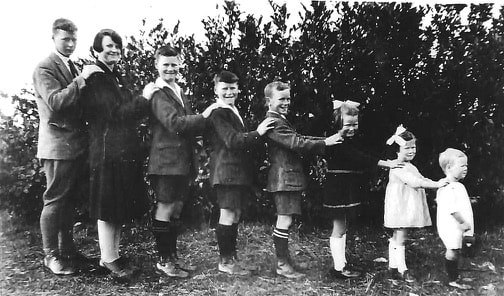That’s my Dad.

That’s my Dad, the tall one on the left, on his 21st birthday,1928.
The others are his siblings.
Dad was a school dropout. Not from choice. Left fatherless, Dad had to leave school and get work to try to support the family. He eventually made a career as a Wool Classer.
The raw wool would arrive from the farm, each fleece rolled up and dozens packed in a bale. Each fleece would be spread out on the sorting table, the necks and skirtings removed to be separately sold, and then the fleece graded for length, quality and fineness of the fibres. Dad could roll a wool staple in his fingers and tell you the diameter of the wool fibre in microns. Not precisely, but accurately, so the manufacturers could get the grade they needed for carpets, or furnishings, or working clothes or high-end fashion. Of course, “microns” only came in more recent times with our adopting the metric system; pre-metric, the measure was the “count” (something still used for bed linen), but that’s just as the difference between centimetres and inches.
This is an example of Traditional knowledge, the knowledge and skills that are the web and woof of any community or society. Learnt on the task from others and refined by our experience, and then passed on to the next generation. It is the difference between an experienced engineer and a new graduate, between an experienced tradie and an apprentice.
Another example of Traditional knowledge is mātauranga Māori, the experience and the worldview of New Zealand’s indigenous people, which was overwhelmed and almost extinguished by European colonisation. To understand the resurgence of mātauranga Māori and the ensuing conflict generated, go to my next blog……
§2 Colonisation and Māori knowledge



Leave A Comment